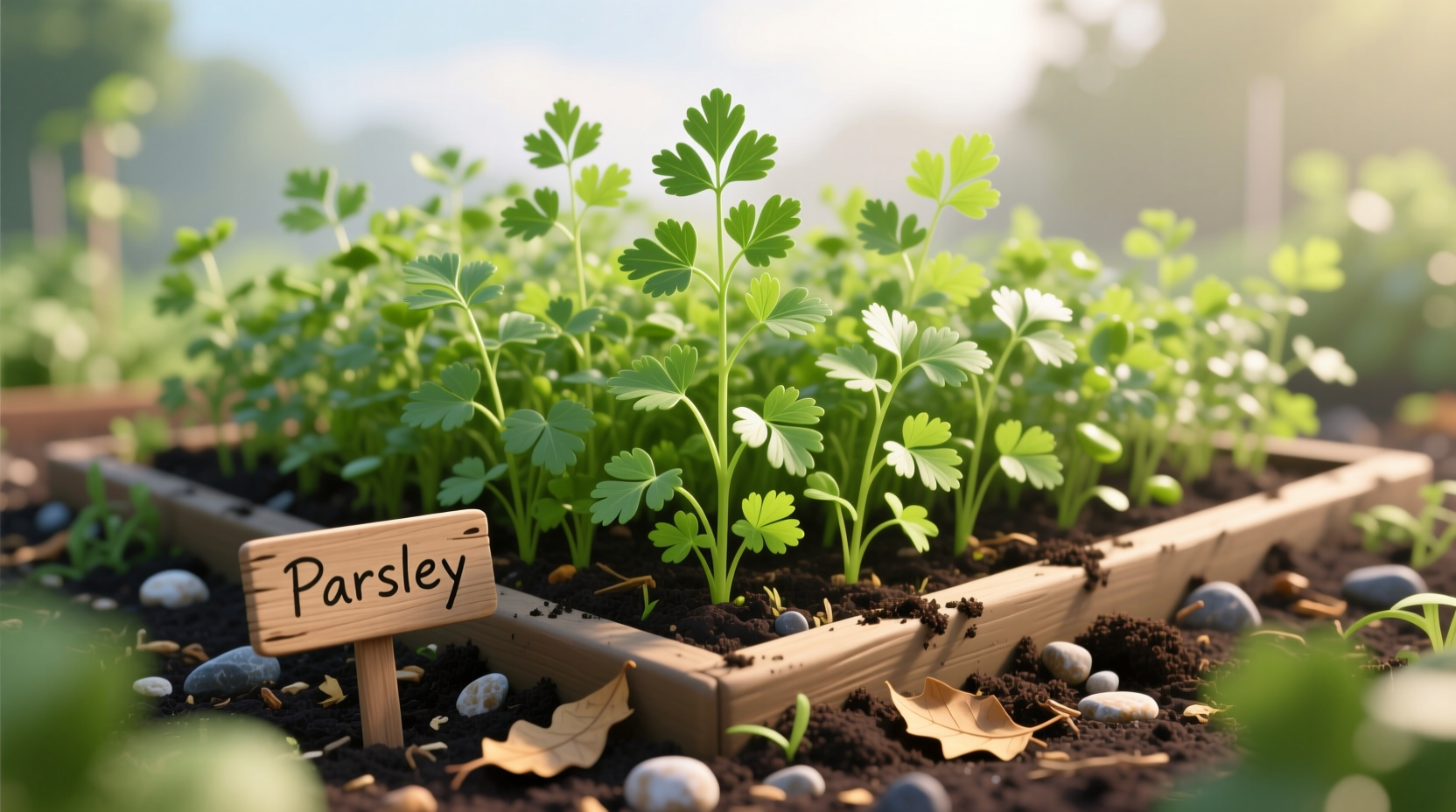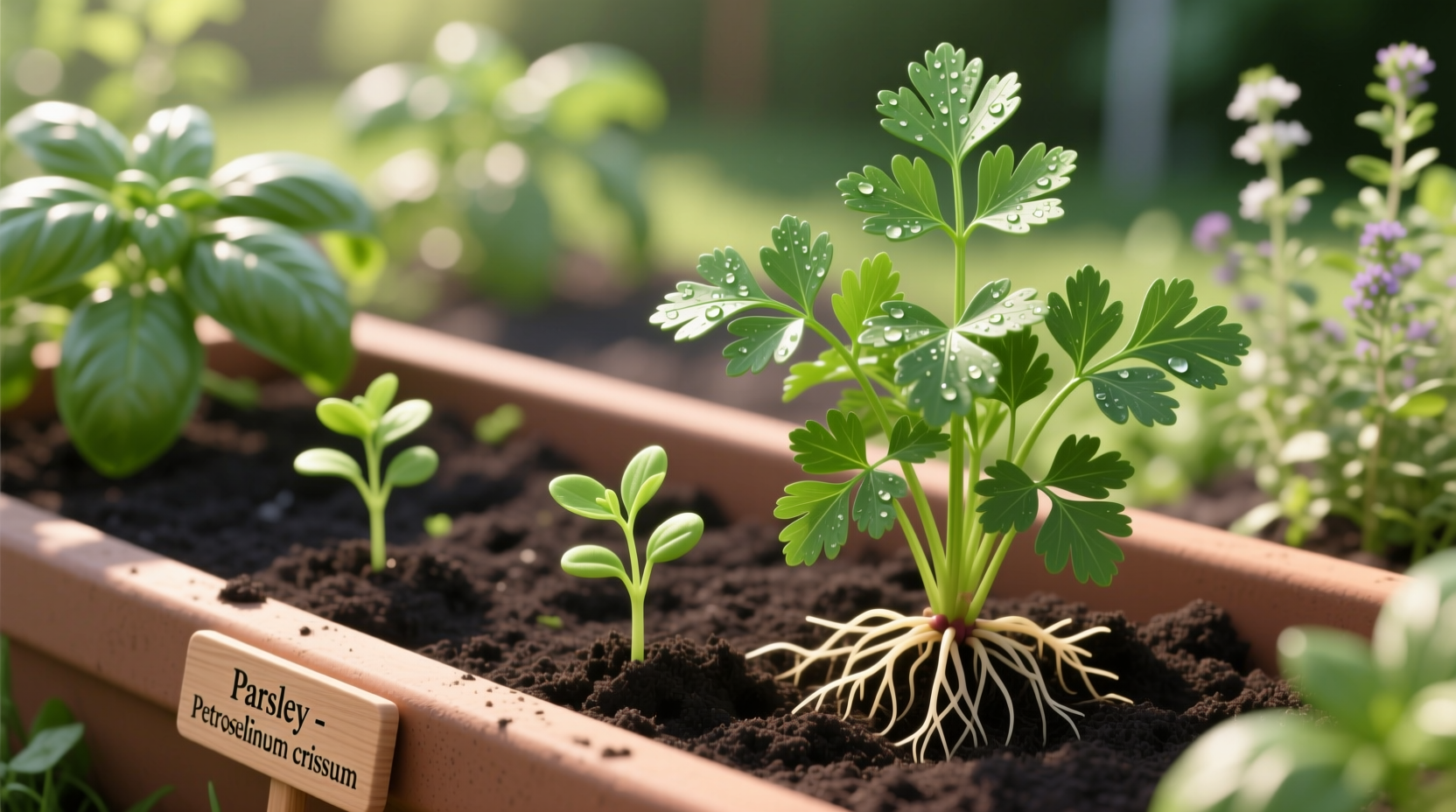Successfully cultivate parsley by planting seeds in well-draining soil with pH 6.0-7.0, providing 4-6 hours of sunlight daily, maintaining consistent moisture, and harvesting outer leaves when plants reach 6 inches tall. Most varieties mature in 70-90 days with proper care.
Whether you're a home gardener seeking fresh culinary herbs or a beginner looking to expand your edible garden, parsley cultivation offers a rewarding experience with practical kitchen benefits. This comprehensive guide delivers actionable steps based on agricultural research and field-tested growing practices to help you produce healthy, flavorful parsley regardless of your gardening experience level.
Essential Starting Materials for Parsley Cultivation
Before planting, gather these fundamental supplies to ensure successful parsley growth. Unlike many herbs, parsley has specific germination requirements that demand proper preparation. Start with high-quality seeds from reputable suppliers, as parsley seeds lose viability quickly. The two primary varieties—curly leaf (Petroselinum crispum) and Italian flat-leaf (Petroselinum neapolitanum)—have slightly different growing characteristics but share core cultivation needs.
Prepare containers with drainage holes or select a garden bed location receiving partial to full sun. While parsley tolerates some shade, insufficient light produces weak, leggy plants with diminished flavor. Use a soil test kit to verify your pH level—parsley thrives in slightly acidic to neutral conditions between 6.0 and 7.0. Amend heavy clay soils with compost to improve drainage, as waterlogged roots cause rapid plant decline.

Step-by-Step Planting Process
Parsley's notoriously slow germination (2-5 weeks) requires strategic planning. Soak seeds in warm water for 24 hours before planting to soften the hard outer coating and accelerate sprouting. Plant seeds ¼ inch deep in moist soil, maintaining consistent moisture during germination—drying out at this stage prevents sprouting.
For outdoor planting, wait until soil temperatures reach at least 60°F (15°C). In cooler climates, start seeds indoors 8-10 weeks before the last frost date. Space plants 6-8 inches apart to allow proper air circulation, which prevents common fungal diseases. Thin crowded seedlings carefully to avoid disturbing neighboring roots.
Optimal Care Throughout Growth Cycle
Consistent moisture represents parsley's most critical care requirement. Water deeply when the top inch of soil feels dry, aiming for 1-1.5 inches of water weekly. Mulch with organic material to maintain soil moisture and temperature stability. During hot summer months, provide afternoon shade to prevent bolting.
| Parsley Variety | Germination Time | Maturity Timeline | Preferred Conditions |
|---|---|---|---|
| Curly Leaf | 3-4 weeks | 80-90 days | Full sun, rich soil |
| Italian Flat-Leaf | 2-3 weeks | 70-80 days | Partial shade, well-drained soil |
| Hamburg Rooted | 3-4 weeks | 90-100 days | Deep, loose soil for root development |
Fertilize monthly with balanced organic fertilizer (10-10-10) once plants establish. Avoid high-nitrogen formulas that promote leafy growth at the expense of flavor complexity. Monitor for yellowing leaves, which indicate potential nutrient deficiencies or overwatering.
Harvesting Techniques for Maximum Flavor
Begin harvesting when plants reach 6 inches tall by cutting outer stems at soil level. This encourages new growth from the center and extends productive life. Morning harvesting yields the highest essential oil concentration for optimal flavor. Never remove more than one-third of the plant at once to prevent stress.
For continuous harvest, plant successive crops every 2-3 weeks during growing season. In temperate climates, parsley often survives winter with minimal protection, providing early spring harvests before new growth begins. Store cut stems in a glass of water in the refrigerator for up to two weeks.
Troubleshooting Common Cultivation Challenges
Parsley faces several common issues that affect yield and quality. Aphids frequently cluster on new growth—dislodge them with strong water sprays or insecticidal soap. Fungal diseases like leaf spot appear as brown spots with yellow halos; prevent these by watering at soil level and ensuring proper spacing.
Carrot weevils pose a significant threat as parsley belongs to the Apiaceae family. Rotate planting locations annually and use floating row covers during adult weevil activity periods. Yellowing leaves may indicate root knot nematodes—amend soil with composted organic matter to improve beneficial microbial activity.
Understanding context boundaries proves essential for successful cultivation. While parsley tolerates partial shade, insufficient light in northern climates requires supplemental lighting for indoor growing. Container gardening works well but demands more frequent watering and feeding than garden beds. In hot southern regions, provide afternoon shade to prevent premature bolting.
Advanced Cultivation Strategies
For extended harvests, implement these professional techniques. Start fall crops 8-10 weeks before first frost for winter harvests in mild climates. Use cold frames or hoop houses to protect plants through freezing temperatures. In colder zones, grow parsley in containers that can move indoors during extreme weather.
Save seeds from non-hybrid varieties by allowing select plants to flower and set seed. Note that parsley is biennial—seed production occurs in the second year. Store dried seeds in airtight containers in cool, dark conditions for up to two years.
Practical Parsley Cultivation FAQ
These frequently asked questions address common concerns from gardeners at all experience levels:











 浙公网安备
33010002000092号
浙公网安备
33010002000092号 浙B2-20120091-4
浙B2-20120091-4